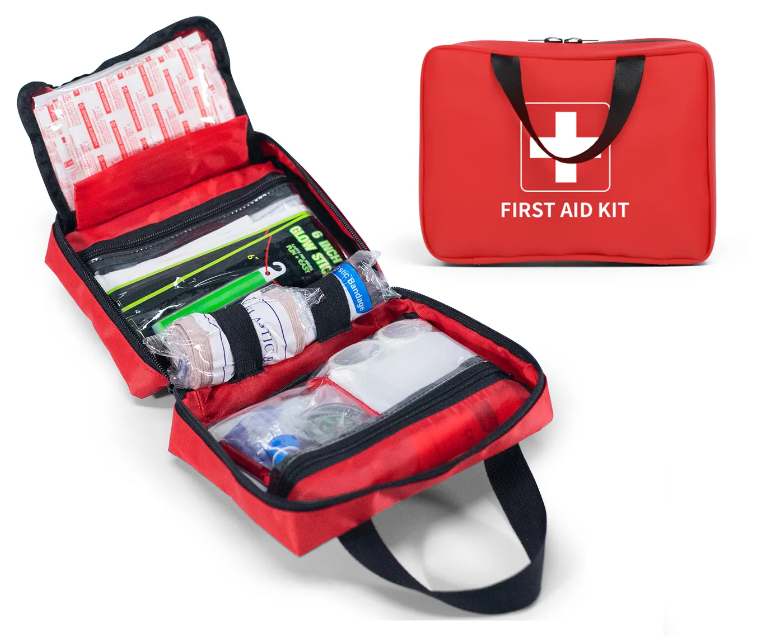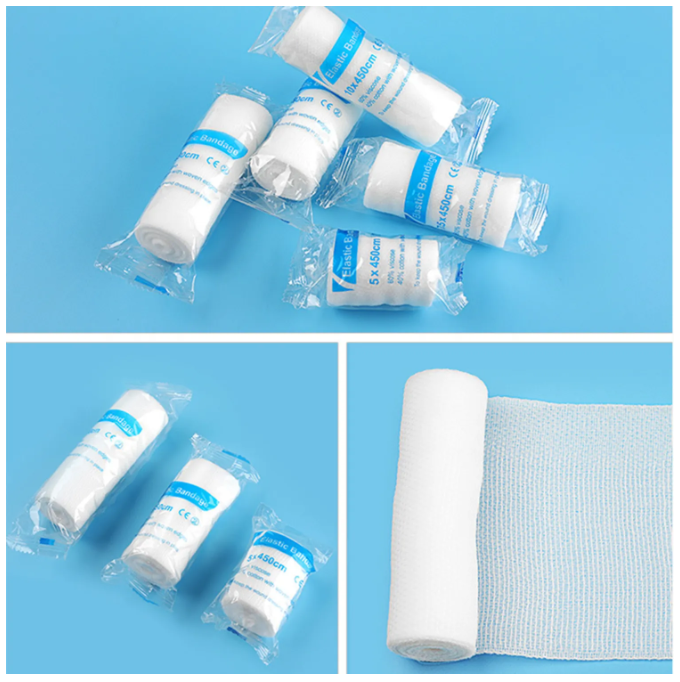
GET A QUOTE
What to Put in a Child Emergency Kit?
Emergencies can happen anytime, anywhere. For parents and caregivers, being prepared for unexpected situations is crucial to ensuring the safety and well-being of their children. One of the best ways to be prepared is by having a well-stocked child emergency kit. But what should you put in a child emergency kit? This article will guide you through the essentials that every child emergency kit and first aid kit should contain, ensuring you're ready for any situation.
The Importance of a Child Emergency Kit
An emergency kit for children is a specially curated collection of supplies designed to help you respond effectively to injuries, illnesses, or other urgent situations involving children. Whether you’re at home, on the road, or traveling, having a child emergency kit can make a significant difference in how you handle unforeseen events. The peace of mind that comes with being prepared is invaluable.
Essentials for a Child Emergency Kit
Basic First Aid Supplies
A fundamental component of any child emergency kit is the basic first aid kit. Here’s what you should include:
- Bandages and Adhesive Tape: For minor cuts, scrapes, and injuries.
- Sterile Gauze Pads: To cover wounds and control bleeding.
- Antiseptic Wipes: To clean wounds and prevent infections.
- Tweezers: For removing splinters or debris from wounds.
- Scissors: Useful for cutting tape, gauze, or clothing if necessary.
- Disposable Gloves: To maintain hygiene and protect against infections.
- Cold Packs: To reduce swelling and manage pain from injuries.
Medications and Treatments
Medications are essential in managing pain, allergies, and other common issues. Ensure you include:
- Pain Relievers/Fever Reducers: Such as acetaminophen or ibuprofen, suitable for children.
- Antihistamines: For allergic reactions or insect bites.
- Hydrocortisone Cream: For itching, rashes, or skin irritations.
- Oral Rehydration Solutions: To treat dehydration from illnesses like stomach bugs.
- Prescribed Medications: Any medication your child regularly takes.
Emergency Contact Information
Having emergency contact information easily accessible is crucial. Include:
- Contact Numbers: For family members, your child’s pediatrician, and local emergency services.
- Health Insurance Information: In case you need to visit a hospital or clinic.
Tools and Supplies
Additional tools and supplies can be incredibly useful in an emergency. Consider adding:
- Flashlight with Extra Batteries: Essential during power outages or in low-light situations.
- Multi-Tool or Swiss Army Knife: For various minor tasks.
- Thermometer: To monitor fevers accurately.
- Blanket: To keep your child warm and comfortable.
Personal Items and Comfort
Children can get anxious or scared during emergencies. Including some personal items can help soothe them:
- Favorite Toy or Stuffed Animal: For comfort and reassurance.
- Books or Small Games: To distract and entertain your child during stressful times.
Special Considerations for Infants and Toddlers
If you have infants or toddlers, it's crucial to tailor your child emergency kit to meet their specific needs. Here are some essentials to include:
Diapers and Wipes
Maintaining hygiene is paramount, especially for young children. Be sure to pack an ample supply of diapers and wipes to keep your little one clean and comfortable during emergencies.
Baby Formula or Food
Depending on your child's age and dietary requirements, include enough baby formula or food to sustain them for an extended period. Having familiar and nutritious options on hand can help alleviate stress during uncertain times.
Pacifiers and Bottles
To soothe and nourish your baby, include pacifiers and bottles in your emergency kit. These items can provide comfort and help regulate your child's emotions, even in challenging situations.
Extra Clothes
Accidents happen, especially with young children. Pack extra clothing to address spills, accidents, or changes in weather conditions. Having clean and dry clothes readily available can make a significant difference in your child's comfort and well-being.
Long-Term Emergency Supplies
In scenarios where emergencies extend beyond immediate resolution, additional supplies become essential for sustained comfort and safety. Consider the following items for your long-term emergency preparedness:
Non-Perishable Food
Stock up on non-perishable snacks and meals that don't require refrigeration. These items provide sustenance during prolonged emergencies and evacuation scenarios, ensuring your family's nutritional needs are met.
Water
A sufficient supply of water is vital for hydration and basic hygiene. Ensure you have an ample quantity of potable water stored for drinking and sanitation purposes, especially in situations where access to clean water may be limited.
Extra Clothing
Include extra clothing in your emergency kit to accommodate changing weather conditions and prolonged stays away from home. Layering options and weather-appropriate attire can help your family stay comfortable and protected during uncertain times.
Portable Charger
Keep your mobile devices powered with a portable charger. In emergencies, communication and access to information are crucial. A charged phone or device can facilitate communication with emergency services, family members, and essential resources.
Maintaining Your Child Emergency Kit
Regular upkeep of your child emergency kit ensures its effectiveness when needed most. Here's how to keep your kit up-to-date:
Regular Checks
Perform routine checks of your emergency kit contents every six months. This practice ensures that supplies are intact, unexpired, and readily available for use during emergencies.
Replace Expired Items
Check expiration dates on medications and food items regularly. Discard and replace any expired items to maintain the efficacy and safety of your emergency kit.
Update Personal Information
Keep contact details and health information current within your emergency kit. Ensure that phone numbers, addresses, and medical records are up-to-date to facilitate swift and effective assistance during emergencies.
Adjust for Growth
As your child grows and their needs evolve, update your emergency kit accordingly. Considerations such as changes in medication dosages, dietary preferences, and clothing sizes should be reflected in the contents of your kit to ensure its continued suitability for your child's well-being.
Where to Keep Your Child Emergency Kit
Strategic placement of your child emergency kit enhances accessibility and readiness. Here are some storage suggestions to consider:
At Home
Store your emergency kit in an easily accessible location within your home. Ensure that all family members are aware of its placement for quick retrieval during emergencies.
In the Car
Keep a compact version of your emergency kit in your vehicle. This portable kit can prove invaluable during travel or unforeseen roadside emergencies, providing essential supplies until further assistance is available.
While Traveling
Always carry a portable emergency kit when traveling away from home. Whether embarking on a short excursion or an extended vacation, having essential supplies on hand ensures preparedness for unexpected situations, regardless of your location.
Conclusion
Being prepared with a well-stocked child emergency kit can significantly impact how effectively you handle emergencies. By ensuring your kit includes the essential first aid supplies, medications, personal items, and important contact information, you can manage unexpected situations with confidence and care. Regular maintenance and proper storage of the kit will ensure that you’re always ready, providing peace of mind and safety for your child. Remember, a child emergency kit is an investment in your child’s safety and your peace of mind. Don’t wait for an emergency to happen; start building your child emergency kit today and be prepared for whatever comes your way.
At RisenMedical, we understand the importance of being prepared for emergencies. That’s why we offer a wide range of high-quality emerency first aid kit supplies tailored for children. Our products are designed to meet the unique needs of your family, ensuring you have everything you need when it matters most. Trust RisenMedical to help you build the perfect child emergency kit, so you can have peace of mind knowing you’re prepared for any situation. Visit RisenMedical today to explore our products and take the first step towards a safer, more prepared future for your family.


